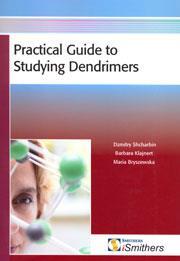Practical guide to studying dendrimers
Practical guide to studying dendrimers
Dzmitry Shcharbin, Barbara Klajnert and Maria Bryszewski
Shrewsbury, UK: iSmithers Rapra Publishing 2010 | 120pp | ?75.00 (SB)
ISBN 9781847354440
Reviewed by David K Smith

Dendrimers are beautiful, highly branched, well-defined polymers, and since their first synthesis in the 1980s, they have increasingly been a focus of research attention. Their well defined structures combined with their precisely controllable nanoscale dimensions make them intriguing candidates for application in nanomedicine where they can interact with cellular components on a biologically relevant length-scale.
This book does precisely what it says on the cover, and whilst it may be light on the beauty of dendrimers, containing just three figures in total, it makes up for it in practicality. It would not be my first choice of book for newcomers wanting an overview of the topic, for which I would highly recommend Dendrimers in medicine and biotechnology (Boas, Christensen and Heegaard, 2006). This book, however, will be useful for researchers in the field, if quite expensive given its length.
The book is usefully organised in terms of the progress of a dendrimer into a cell - considering dendrimer interactions with membranes then proteins and nucleic acids, and ultimately whole cells and even living organisms. As a practical guide, it is most useful when providing accessible information about the techniques which can be used to study dendrimers within each of these biological settings and providing an overview of the current state-of-the-art results. As such, this book would be useful to the active researcher interested in working with dendrimers and needing details about how best to exploit them in biological systems.
Furthermore, many of the methods could be applied to the biological study of other well-defined nanopolymers. Well referenced, this would be a great book to have lying around in any dendrimer lab - in fact that is exactly where my copy is now.












No comments yet